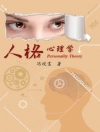Delivers uncomplicated and useful techniques for better teaching to nonmajors in liberal arts courses.
Teaching Nonmajors focuses on what dedicated teachers want to know-how can I teach better in the classroom? Unlike most books on teaching, this book delivers uncomplicated and immediately useful techniques and strategies for teaching required courses to nonmajors. Providing practical examples and brief anecdotes drawn from a variety of disciplines in the liberal arts and sciences, the author describes simple ways to break up lectures, how to stimulate the best discussions, the art of assignments, how to improve student ratings, and successful strategies for engaging nonmajors and for handling problem students. Teaching Nonmajors is written especially for liberal arts college and university professors at all career stages-from adjuncts and new professors, to seasoned professors looking for a fresh approach heading into a new term.
Table des matières
Preface
1. Give Better Lectures
Do What You Naturally Do Best—Passion Wins
Do the Unexpected
Know Your Stuff
Care for Question and Answer
Avoid Lecture Traps
Exploit Analogies and Diagrams
Give Students the Notes
The Challenge of Power Point
Briefly Debrief Yourself
2. Break Up Lectures
Use Relevant Class Discussion
Props
Songs
In-Class Reading and Writing
Visual Artwork
Films (Not Movies!)
Personal Experience
Comfort Breaks
3. The Best Discussions and Student Presentations
Arranging a Discussion
Discussion Goals
Discussion Structures
Debriefing
Student Presentations
4. The Art of Assignments
Assign Readings Smartly
Get Students to Read
Exams
Papers
Grading
Distinction and Continuity in Assignments
5. Sensible Policies
Think Deeply about a Good Syllabus
Attendance and Lateness
Communication
Plagiarism
6. Professor and Student Problems
Teaching Disinterested Students
The Aggressive Passive-Aggressive Student
The Interrupter
The Hijacker
The Painfully Shy Student
Special Needs Students Are Not Problem Students
7. Understand and Improve Student Ratings
Read and Understand the Form
Each Student Is a Voter
Interact with Student Ratings Criteria in Mind
Administer Student Ratings Appropriately
Use a Secondary Form
Ego Fluctuation, Knowing the Standard, and Online Ratings
8. Conclusion
Index
A propos de l’auteur
P. Sven Arvidson is Visiting Associate Professor of Philosophy and Senior Faculty Fellow in the Center for Excellence in Teaching and Learning at Seattle University. He is the author of The Sphere of Attention: Context and Margin and the coeditor (with Robbie Davis-Floyd) of Intuition: The Inside Story: Interdisciplinary Perspectives.












